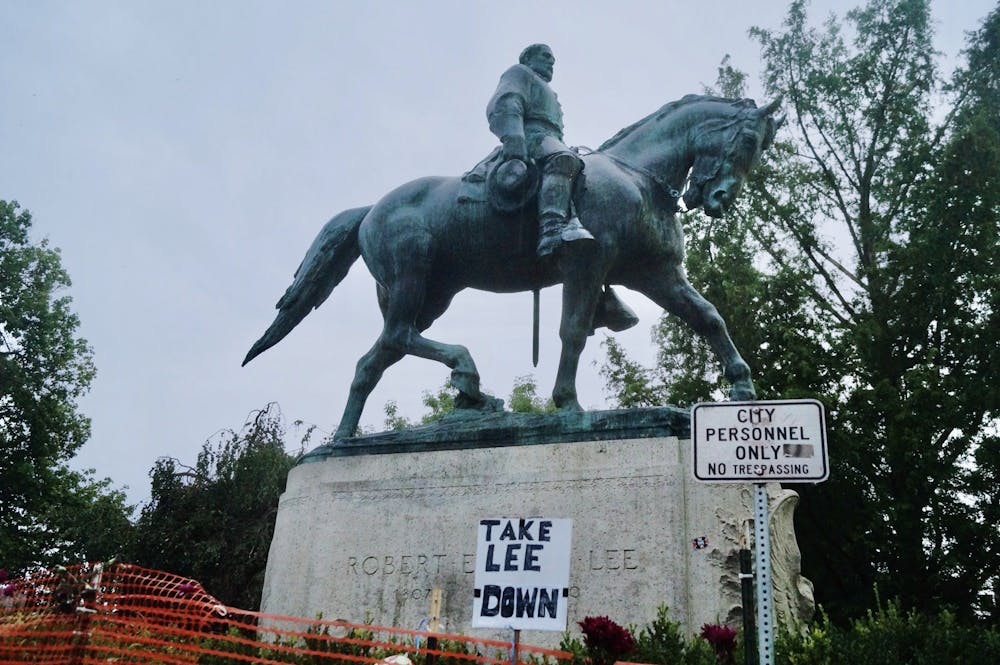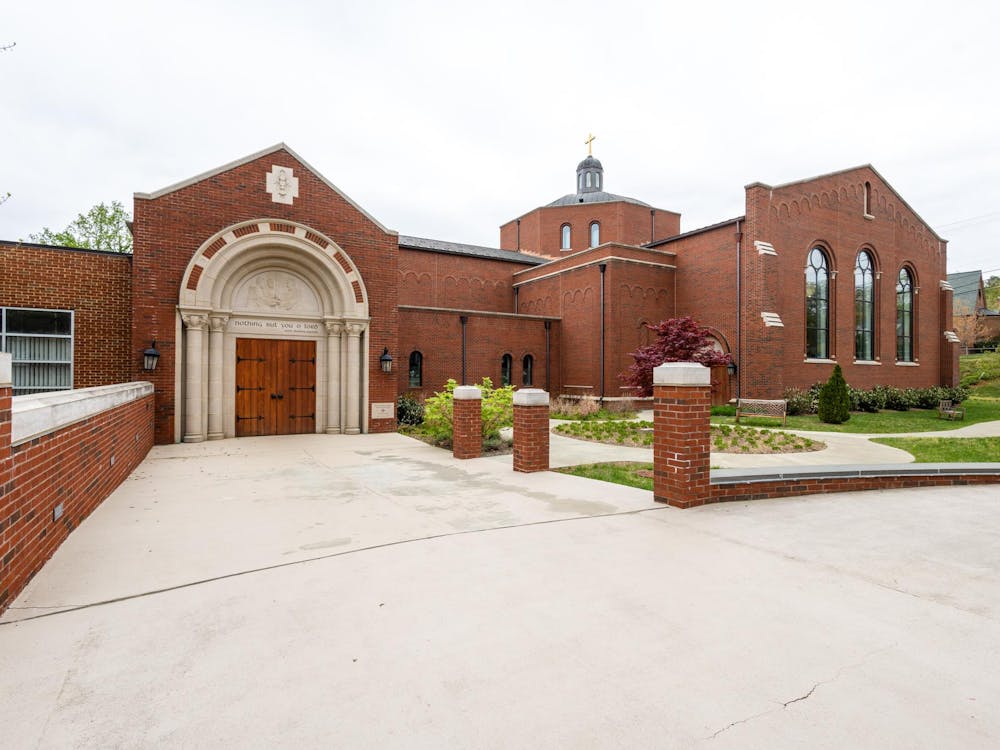Leaders of Swords into Plowshares met Sunday at the Jefferson School African American Heritage Center to discuss the current state of the lawsuit attempting to prevent the project’s transformation of the Robert E. Lee statue.
SIP is a group of community members led by JSAAHC aiming to melt down Charlottesville’s Lee statue and create a new piece of public art.
JSAAHC Executive Director Andrea Douglas explained at Sunday’s meeting that JSAAHC was removed as a defendant, but remains invested as the party who currently possesses the statue.
The Lee statue has been the subject of much controversy and several lawsuits over the years. In 2016, Zyahna Bryant, SIP ambassador and fourth-year College student authored a petition as a local high school student to have the Lee statue removed. This later prompted City Council to unanimously vote to have the statues removed in February 2017.
Later that summer, torch-wielding white supremacists marched down the Lawn protesting the statue’s removal Aug 11 and the next day’s “Unite the Right” rally turned deadly when a white supremacist drove his car into a crowd of counterprotesters — injuring 19 and killing Charlottesville resident Heather Heyer.
After the City removed the Lee statue in July 2021 and voted to donate the statue to the JSAAHC December 2021 so that SIP could create a new public work with the bronze, the Trevilian Station Battlefield Foundation and the Ratcliffe Foundation filed a lawsuit against both the JSAAHC and the City. The lawsuit argues that state law allows the City to “remove, relocate, contextualize or cover” veteran monuments, but does not allocate the right to destroy.
Douglas said she sees the results of the case as encouraging and remains optimistic that the City will prevail.
Charlottesville Circut Court heard the case Oct. 10, denying the plaintiff's request for an early appeal and granting the City’s motion to protect the location of the statue — whose current location is undisclosed. According to Douglas, the plaintiffs will be allowed to see the statue and file a report on its physical condition, but its location will not be revealed to the public in order to protect both the statue and members of SIP.
“We knew this was a dangerous thing, we need to protect our community,” Douglas said.
“There is no injunction that keeps us from moving forward, but in order to be a good citizen, we have made the decision to let it all play out, given the certainty that we will prevail,” Douglas said.
Following updates on the trial, Frank Dukes, SIP community engagement leader and facilitator with the Institute for Engagement and Negotiation, summarized the results of over 390 community respondents. In order to inform the process of designing a new art piece from the melted down Lee statue, participants answered questions ranging from which stories the art should feature in their new artwork to how to improve Charlottesville as a whole.
53 percent of respondents live in Charlottesville, while 32 percent live in Albemarle. 68 percent were white and 13 percent were Black, which is relatively reflective of the area’s racial composition.
Many responses pointed to the legacy of enslaved laborers and their descendants in both the University and the city and suggested that the art include figures such as Isabella Gibbons, an enslaved laborer at the University who later became one of the first teachers at the Jefferson School. Participants said the new piece should involve the community and spark conversations, with one response visualizing the art as “kind but intense, draw[ing] attention and controversy.”
Regarding what form the project should take, many respondents hoped that the art would incorporate function — with the bronze melted down to form public amenities such as a public garden, hammock anchors or a playground. Another idea referenced Berlin’s Stumbling Stones project honoring Holcaust victims, which features small golden bricks placed as reminders throughout the city.
Given the contrast in tone of these projects, Dukes invited the audience to discuss whether the project requires a more somber approach.
Bryant said she feels the statue’s heavy history deserves a fitting tribute.
“Whatever it becomes, it should not be something kids climb on,” Bryant said. “I don’t think it needs to be sad and somber, but I think it should have some level of respect and honor for it. We didn’t see kids climbing on the Lee statue, so I think the same level of respect should be given here.”
As community members prepare for the upcoming Feb. 1 trial, Douglas encouraged SIP supporters to attend and said she appreciates the level of community engagement surrounding the statue’s future.
“I feel really confident that we are moving forward deliberately, with a consistent message that says to the larger world that Charlottesville will make its own decisions about its public spaces,” Douglas said.







